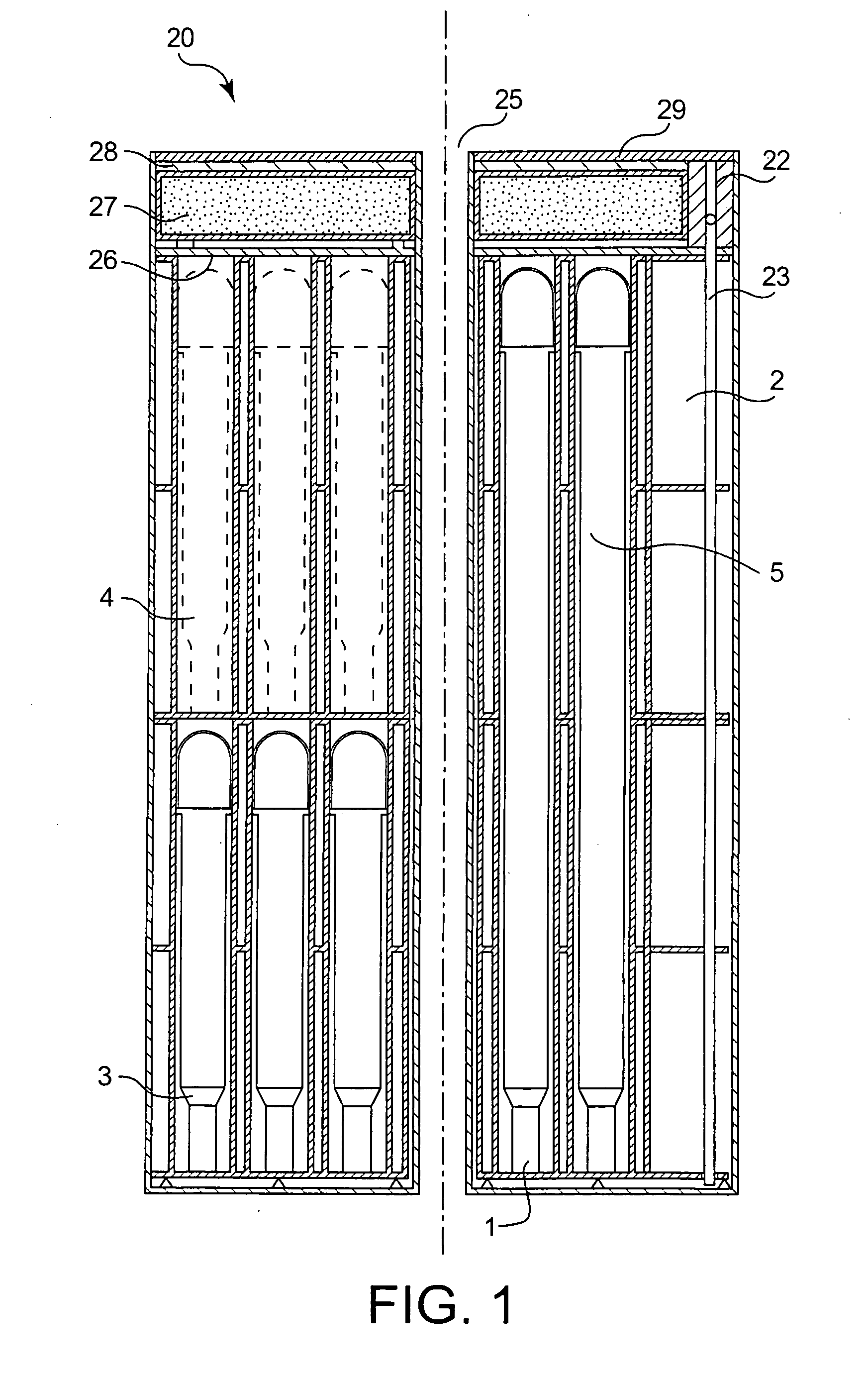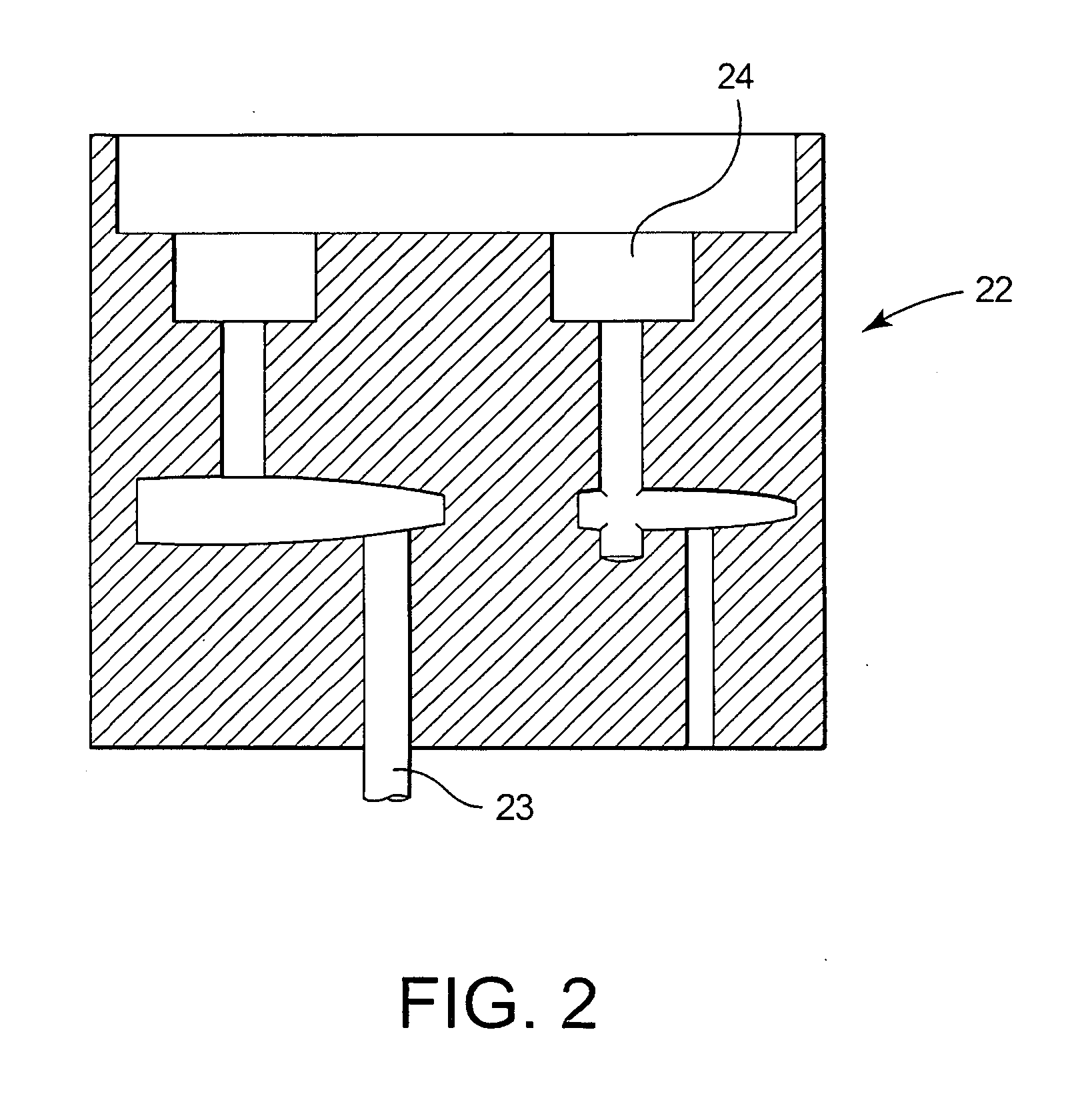Device And Method For Conditioning Nuclear Fuel Assemblies With Double Confinement Barrier
a technology of confinement barrier and nuclear fuel, which is applied in the direction of electrodes and associated parts, reactor fuel elements, instruments, etc., can solve the problems of time and cost, more restrictive techniques, and inability to condition under water, etc., and achieve the effect of facilitating existing procedures
- Summary
- Abstract
- Description
- Claims
- Application Information
AI Technical Summary
Benefits of technology
Problems solved by technology
Method used
Image
Examples
Embodiment Construction
[0022]FIG. 1 shows a metallic confinement receptacle (20), formed from a cylindrical receptacle with sidewalls and a loading opening, closed at its lower end by non-removable bottom. A duct (25) with a circular section also passes through the centreline of the metallic receptacle (20): therefore, the duct has walls along its length but remains open at both its ends. The walls of the receptacle, in other words the sidewalls and the walls of the duct, resist radioactivity but do not necessarily provide radiation shielding. It is obvious that these different forms and arrangements are preferred but not essential examples; for example a receptacle with a parallelepiped shaped section, a side duct and / or a duct with any other shape are other possibilities.
[0023] Before loading irradiated fuel assemblies (1), the confinement receptacle (20) is placed in the pool of the nuclear power station. In the context of safety measures and particularly processes according to the invention, the rece...
PUM
 Login to View More
Login to View More Abstract
Description
Claims
Application Information
 Login to View More
Login to View More - R&D
- Intellectual Property
- Life Sciences
- Materials
- Tech Scout
- Unparalleled Data Quality
- Higher Quality Content
- 60% Fewer Hallucinations
Browse by: Latest US Patents, China's latest patents, Technical Efficacy Thesaurus, Application Domain, Technology Topic, Popular Technical Reports.
© 2025 PatSnap. All rights reserved.Legal|Privacy policy|Modern Slavery Act Transparency Statement|Sitemap|About US| Contact US: help@patsnap.com



